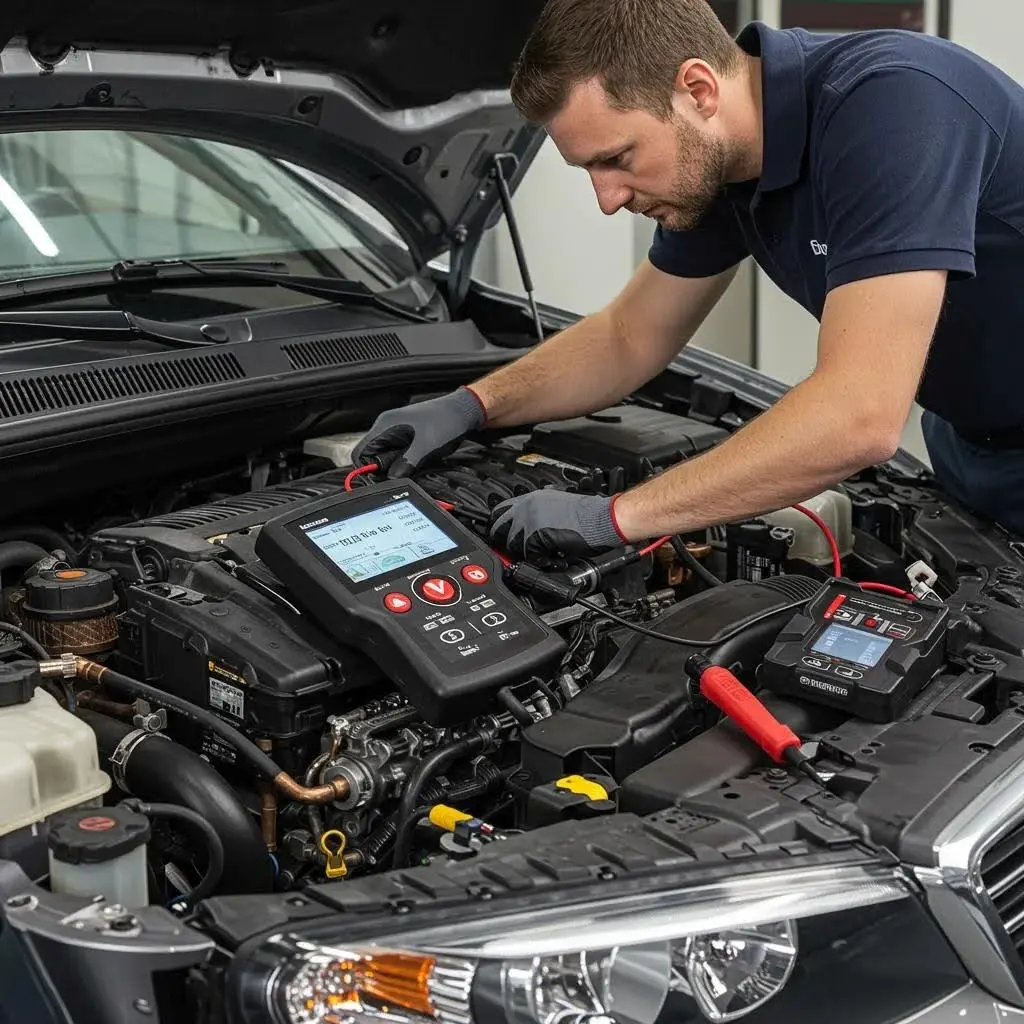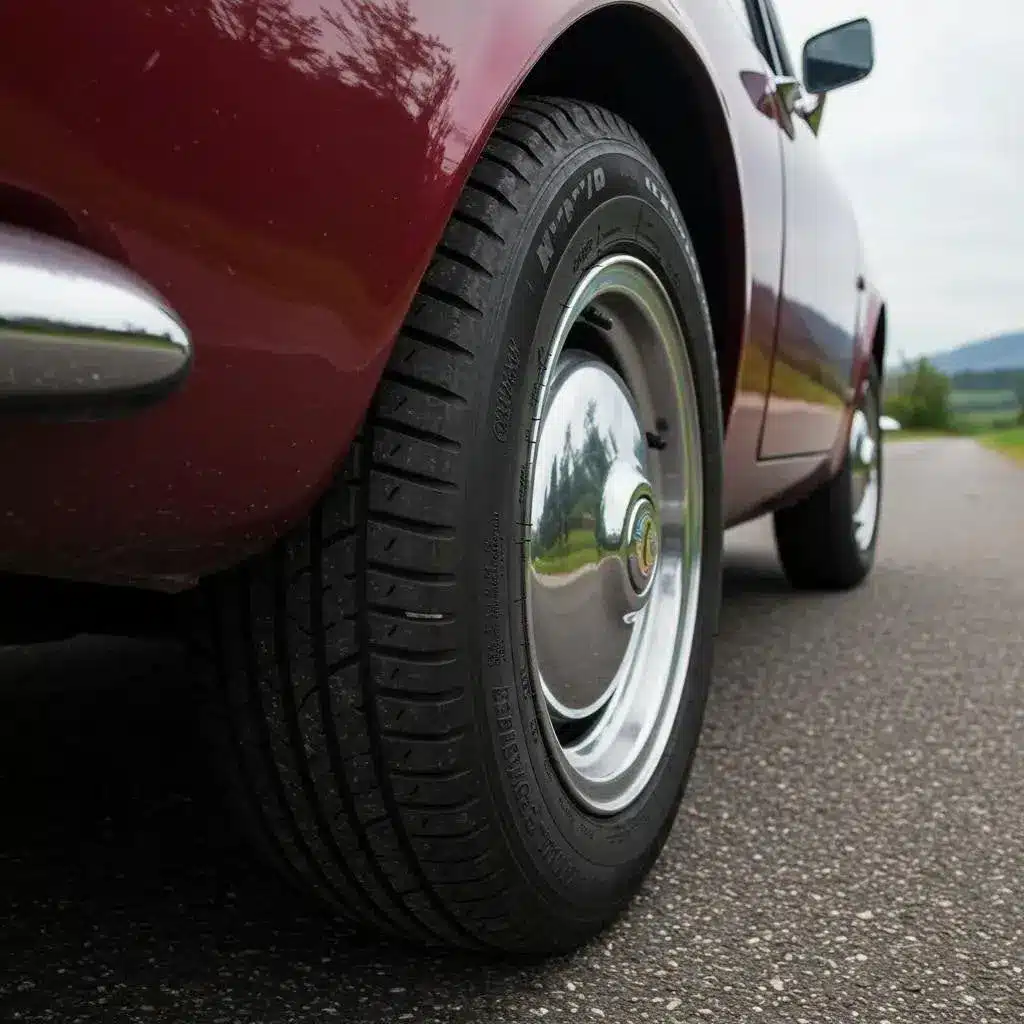The history of the MOT test dates back to 1960 when it was established to improve road safety through routine vehicle inspections. Over time, it has incorporated more stringent safety and environmental regulations. This article examines the test’s origins, how it has evolved, and its impact on vehicle safety standards.
Key Takeaways
- The MOT test was introduced in 1960 to enhance vehicle safety by targeting critical components like tyres, brakes, and steering. It was initially for vehicles over ten years old and later revised to three years in 1967.
- Over the years, the MOT test has expanded to include a wide array of safety and environmental checks, such as emissions tests for diesel and petrol vehicles, electronic system checks, and measures to combat mileage fraud.
- Technological advancements, such as the use of connected equipment and the potential integration of advanced driver-assistance systems, are modernising the MOT test, ensuring it remains effective in addressing emerging safety and environmental challenges.
The Birth of the MOT Test
Introduced in 1960 under the Road Traffic Act, the MOT test first targeted vehicles ten years old or older. It emphasised safety-critical components such as tyres, brakes, and steering to enhance vehicle safety on UK roads.
At its inception, the MOT test focused on a limited number of key areas to verify the minimum safety standards for vehicles to be deemed roadworthy. These initial checks were crucial for the following:
- Identifying and rectifying potential safety hazards
- Reducing the risk of accidents caused by mechanical failures
- Ensure that vehicles on the roads are not dangerous to their drivers or other road users.
As the years progressed, the significance of the MOT test became more apparent, and the history of the MOT reflects this evolution. Initially conducted ten years after a vehicle’s registration, the interval was later reduced to three years in 1967, reflecting the growing emphasis on regular vehicle maintenance and safety checks. This change marked the beginning of a more rigorous approach to vehicle safety, setting the stage for future expansions and improvements in the MOT testing process.
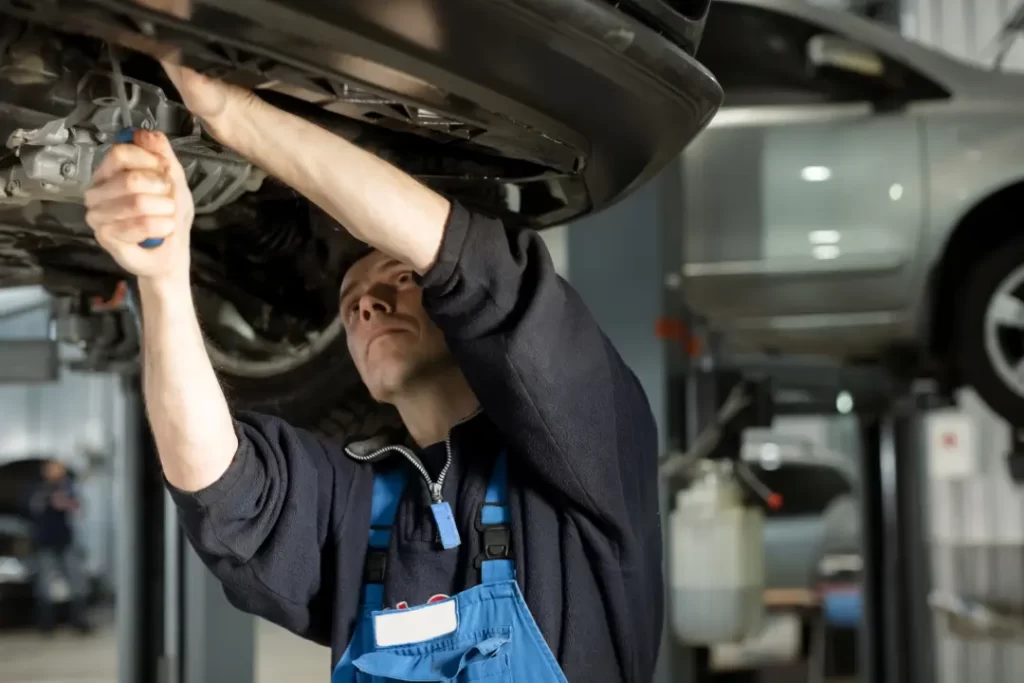
Initial Scope and Early Years
At its outset, the MOT test focused on a few critical areas: brakes, lights, and steering. These components were chosen because their failure could lead to serious accidents. Ensuring they were in good working order was essential for maintaining vehicle safety on the roads.
1968 saw an expansion of the MOT test’s scope to incorporate tyre checks, mandating a minimum tread depth of 1mm. This addition was crucial, as worn-out tyres significantly increase the risk of accidents, particularly in adverse weather conditions. By including tyre checks, the MOT test aimed to further reduce the number of dangerous vehicles on the road.
The MOT test was originally for vehicles over ten years old, but in 1967, it was changed to include vehicles over three years old. This adjustment reflected a growing recognition of the importance of regular vehicle maintenance and the need to catch potential problems earlier. The early years of the MOT test set the foundation for a comprehensive vehicle safety program that would evolve significantly over the following decades.
Expansion of the MOT Test
Since its establishment, the MOT test has consistently developed, broadening its reach to encompass an extensive range of safety and environmental checks. In 1977, the test saw significant updates, with the inclusion of checks on:
- brake lights
- windscreen wipers
- vehicle horns
- the vehicle’s body condition
These additions aimed to ensure that vehicles were mechanically sound and safe to operate in various conditions.
The 1980s and 1990s brought further expansions. In 1989, a new law mandated that children under 14 must wear seatbelts in the back of the car, emphasising the crucial role of passenger safety. By 1991, the MOT test included rear seatbelt checks and assessments of anti-lock braking systems (ABS), reflecting advancements in vehicle safety technology. Emissions checks were introduced for diesel vehicles in 1994, marking a significant step towards addressing environmental concerns.
The minimum tyre tread depth was increased from 1mm to 1.6mm in 1992, ensuring better grip and reducing the risk of accidents. More recent changes have focused on modern vehicle technologies, including checks on dashboard warning lights, airbags, electronic systems, tyre monitoring systems, and mileage history to combat fraud. These updates ensure that the MOT test remains relevant and effective in maintaining vehicle safety and compliance with current standards.
The MOT test has evolved over the years to address emerging safety and environmental challenges. Some of the key expansions to the test include:
- The introduction of emissions testing in 1991 to address environmental concerns
- The addition of checks for electronic stability control systems in 2012 to improve vehicle safety
- The introduction of mandatory tyre pressure monitoring and performance standards for new tyres in 2016 to ensure optimal tyre safety
These expansions reflect the MOT test’s commitment to ensuring that vehicles on UK roads are safe and reliable by avoiding the use of insecure test certificates.
Influence of European Union Directives
The European Union has been instrumental in moulding the MOT test, especially through numerous directives focusing on standardising safety and environmental regulations across its member states. These directives have harmonised vehicle inspection requirements, ensuring a consistent approach to vehicle safety and emissions testing.
Key directives that have influenced the MOT test include:
- Directive 2014/45/EC
- Directive 2014/47/EC
- Directive 2014/46/EC
- The 1997 UNECE Agreement
These directives have established higher standards for vehicle safety and environmental compliance, ensuring that the MOT test evolves in line with broader European standards.
The impact of these directives is evident in the continuous updates to the MOT test, which now includes a wide range of checks that ensure vehicles meet stringent safety and environmental criteria. This alignment with European standards has improved road safety and reduced harmful emissions, reflecting the MOT test’s dual focus on safety and environmental protection.
Technological Advancements in Testing
Significant technological advancements have modernised the MOT test considerably, bolstering its efficiency and precision. Since 2020, connected equipment such as emission gas analysers, diesel smoke meters, and brake testers have become mandatory for new garages, ensuring that test results are directly uploaded to the MOT testing service. These advancements have streamlined the testing process and reduced the risk of human error.
Connected equipment also plays a crucial role in combating MOT fraud by improving data monitoring and trend analysis. This technology enables better oversight and helps identify fraudulent activities, ensuring the integrity of the MOT testing process. Future technological pilots include the use of cameras for vehicle identification and connected headlamp aim hardware, further improving the accuracy and reliability of the tests.
Voice recognition technology is another promising development, with potential pilots aimed at providing automated real-time advice during MOT tests. These advancements make the testing process more efficient and enhance road safety by thoroughly checking all safety-critical systems and components. The MOT test will likely incorporate even more advanced features as technology evolves to address emerging safety and environmental challenges.
The DVSA’s strategic plan for 2025 and vision for 2030 highlight the commitment to leveraging data and technology to improve MOT testing standards. These plans underscore the ongoing efforts to ensure that the MOT test remains a robust and effective tool for maintaining vehicle safety and compliance.
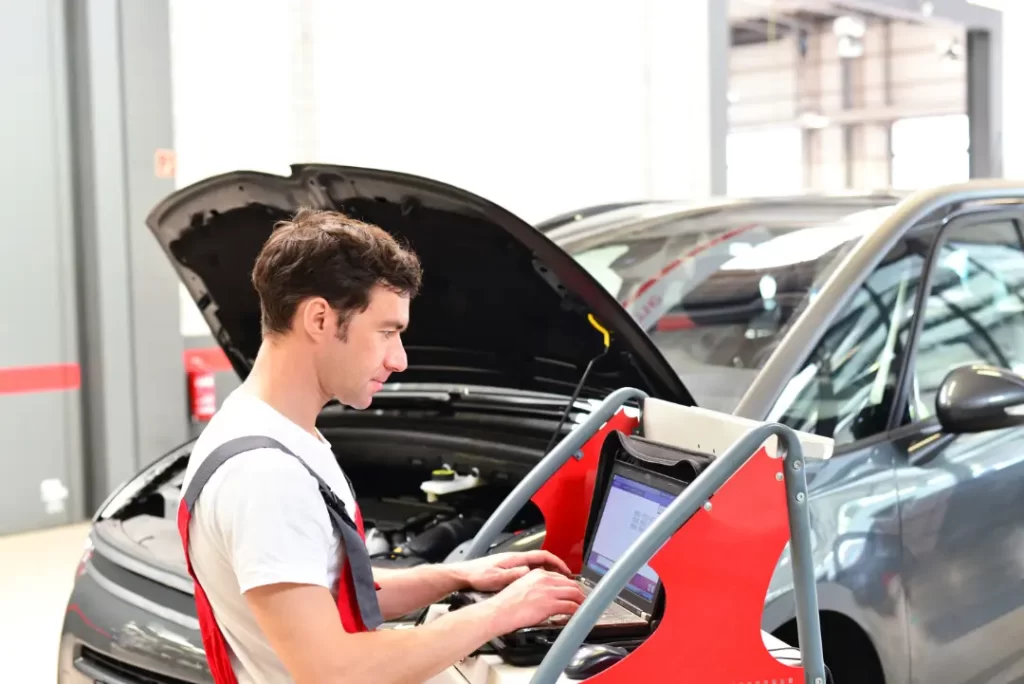
Key Changes Over the Decades
The MOT test, regulated by the vehicle licensing agency, has undergone numerous changes over the decades, reflecting the evolving landscape of vehicle safety and environmental standards. In 1983, the testable age for ambulances, taxis, and vehicles with more than eight passenger seats was significantly reduced to one year. This change was driven by the need to ensure that high-usage vehicles were subject to more frequent safety checks.
In 2019, the MOT test in England, Scotland, and Wales saw further updates, including new checks and standards to enhance vehicle safety. These changes underscore the continuous efforts to adapt the MOT test to emerging safety concerns and technological advancements.
1996 EU Council Directive
The 1996 EU Council Directive introduced a universal standard for periodic safety and emission inspections across EU member states. According to the directive, private cars must be inspected within four years of registration and every two years after that. This harmonisation aimed to ensure that all vehicles met consistent safety and environmental standards, regardless of their country of registration.
The introduction of this directive marked a significant step towards:
- Standardised vehicle safety checks across Europe
- Setting the foundation for future harmonisation efforts
- Enhancing overall road safety and environmental compliance.
2012 EU Harmonisation
In 2012, the EU harmonisation led to key updates to the MOT test, further enhancing vehicle safety and compliance criteria. One of the significant changes included new checks for electronic systems, such as testing electronic parking brakes, to ensure their functionality and safety.
Additionally, the 2012 updates mandated recording a vehicle’s mileage history during the MOT test to combat odometer fraud and ensure accurate vehicle records. These changes reflect the ongoing efforts to improve the reliability and comprehensiveness of the MOT test.
2018 and Beyond
The most recent changes to the MOT test were introduced on 20 May 2018 as part of the EU roadworthiness directive. These changes included updated defect categories and higher exhaust emissions standards, ensuring vehicles met the latest safety and environmental criteria.
Before the changes were implemented, MOT testers had to undergo training to familiarise themselves with the new standards and carry out simulated tests with real vehicle information. These updates also introduced new test areas, such as reversing lights and MIL lights, reflecting the continuous evolution of vehicle technology and safety standards.
Impact of the MOT Test on Road Safety
The MOT test has profoundly influenced road safety in the UK. Since its introduction in the 1960s, road fatalities have significantly declined, from about 8,000 in the mid-1960s to less than 2,000 by 2011. By identifying and rectifying safety-critical defects, the MOT test has played a crucial role in reducing the number of dangerous vehicles on the road.
The test has also led to a decline in serious injuries caused by vehicle defects. In 2013/14, over 770,000 vehicles were found with defects that testers believed rendered them ‘dangerous to drive’. These defects often involved critical components such as:
- brakes
- steering, including rear-wheel steering
- suspension
- tyres
When fixed, these defects contributed to overall road safety.
Additionally, the MOT test has identified numerous vehicles with lighting and signalling defects, among the main reasons for test failures. Addressing these issues indirectly contributes to safer driving conditions. The continuous updates and expansions of the test reflect its ongoing commitment to improving road safety for all road users.
Environmental Implications of the MOT Test
The MOT test has significant environmental implications, incorporating vehicle emission checks to alleviate environmental concerns. Emission tests for petrol engine vehicles measure carbon monoxide and hydrocarbons both at fast idle and idle to ensure compliance with environmental regulations. These tests help monitor the levels of harmful pollutants released during engine operation. For diesel engines, the tests measure smoke opacity at full throttle position, ensuring that vehicles meet the required emissions standards.
One of the key components inspected during the MOT test is the Diesel Particulate Filter (DPF), which filters particulate matter from exhaust gases in diesel vehicles. This device is crucial for reducing emissions and improving air quality. The presence and functionality of the DPF are visually inspected, and vehicles can fail the test if the DPF is not present or inoperative.
Despite these measures, the current MOT test does not directly examine pollutants such as NOx and particulate emissions from the exhaust system. However, possible methods to assess the performance of NOx control systems on petrol and diesel vehicles are being considered.
Modern vehicles must meet stringent emissions standards before being placed on the market. The MOT test plays a vital role in ensuring ongoing compliance with these standards, and obtaining an MOT test certificate is a crucial part of this process.
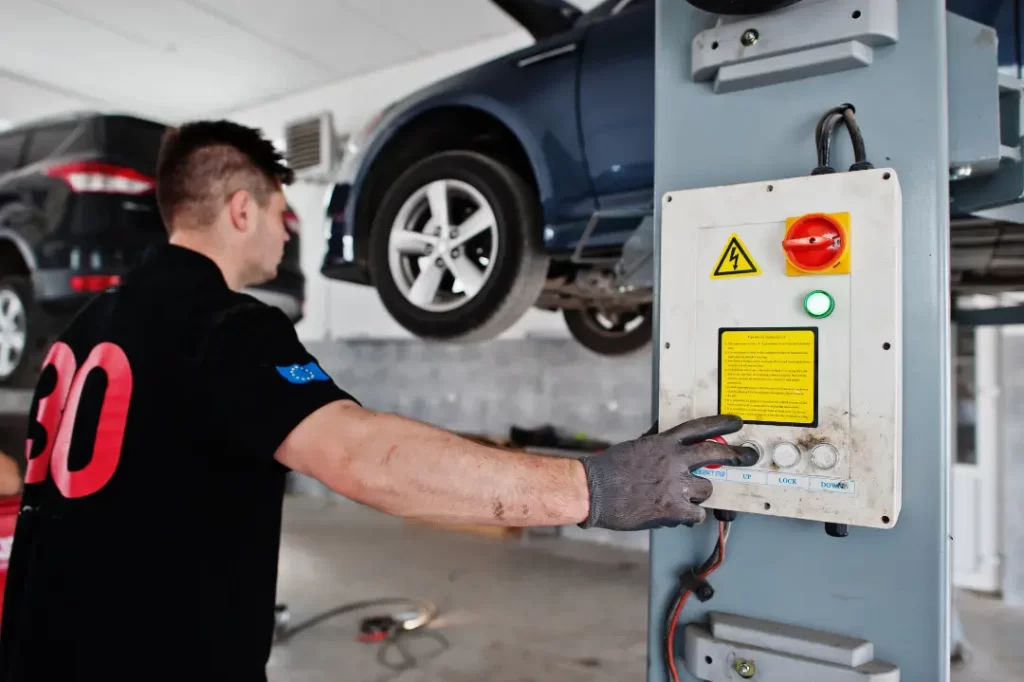
Challenges and Criticisms
While the MOT test offers numerous benefits, it isn’t devoid of challenges and criticisms. One major criticism is that the test primarily relies on visual inspection and some metered checks without allowing for vehicle disassembly. As a result, potential underlying issues might be missed, as the test does not account for problems that might only be detectable through more invasive procedures.
Another significant concern is mileage fraud. While the MOT test records vehicle mileage, it does not verify it, leaving room for potential manipulation of odometers. Such manipulation can result in inaccurate vehicle histories, misleading buyers and affecting vehicle valuations. Efforts to combat this include recording mileage history during the MOT test, but the challenge remains substantial.
There are also criticisms regarding the potential extension of the MOT testing period. Some motorists may neglect regular maintenance, assuming that their vehicle is roadworthy as long as it passes the MOT. Extending the period between tests could exacerbate this issue, leading to more vehicles on the road with undetected defects. Additionally, the absence of emissions tests for diesel cars in Northern Ireland since 2006, despite being legally required, highlights inconsistencies in the application of the test across regions.
Finally, there are concerns about the cost and inconvenience of the MOT test. While the test is designed to ensure vehicle safety and environmental compliance, some car owners perceive it as an unnecessary expense, especially when their vehicles repeatedly fail for minor issues. However, the ability to appeal MOT test results with the DVSA provides a recourse for those who believe their vehicle’s pass or fail status is incorrect.
The Future of the MOT Test
With continual advancements in vehicle technology, the MOT test will need to evolve in tandem. One key area of focus will be the integration of advanced driver-assistance systems (ADAS) and self-driving features into the testing process. These systems, which include features like pedestrian detection, lane-keeping assistance, and automatic emergency braking, will require new testing methodologies to ensure their safety and reliability.
Electric and hybrid vehicles present another challenge for the future of the MOT test. With their increasing prevalence, the test will need to accommodate the differences between these vehicles and traditional internal combustion engine vehicles. This adaptation includes assessing the health of electric vehicle-specific components like batteries and motors and verifying that EV conversions have been done correctly. There is also potential for garages to specialise in maintaining and testing electric vehicles, allowing them to operate without the equipment needed for internal combustion engine vehicles.
The UK’s departure from the European Union allows for a fundamental reassessment and modernisation of roadworthiness testing. This modernisation could involve collecting fuel and energy consumption data during MOT tests to understand real-world CO2 emissions better. As technology and vehicle standards evolve, the MOT test must remain flexible and innovative to meet future challenges.
Summary
The MOT test has come a long way since its introduction in 1960. From its humble beginnings focusing on key safety components, it has evolved into a comprehensive check ensuring vehicles meet stringent safety and environmental standards. The test has significantly contributed to reducing road fatalities and serious injuries and addressing environmental concerns through emissions testing.
The MOT test will continue to adapt to new vehicle technologies and evolving safety standards. As electric and self-driving vehicles become more common, the test will need to incorporate new methodologies to ensure these advanced systems are safe and reliable. The ongoing commitment to improving road safety and environmental compliance underscores the importance of the MOT test in maintaining the well-being of all road users.
Frequently Asked Questions
What is the MOT test, and why is it important?
The MOT test is an annual requirement for most vehicles over three years old in the UK. It ensures they meet safety and environmental standards and is important for vehicle safety and roadworthiness.
How has the MOT test evolved since it was first introduced?
The MOT test has evolved significantly since its introduction in 1960, expanding from basic checks on brakes, lights, and steering to include a wide range of component inspections such as seatbelts, emissions, and electronic systems.
What technological advancements have been made in the MOT testing process?
Technological advancements in the MOT testing process include the use of connected equipment like emission gas analysers and brake testers, leading to streamlined testing and improved accuracy. Future advancements may involve the integration of cameras and voice recognition technology.
What are some of the criticisms of the MOT test?
Some criticisms of the MOT test include its reliance on visual inspections, potential mileage fraud, concerns about vehicle disassembly, extending the testing period, and the cost and inconvenience of the test. These factors raise valid concerns about the test’s effectiveness and fairness.
How will the MOT test adapt to new vehicle technologies in the future?
In the future, the MOT test will need to accommodate advanced driver-assistance systems and electric vehicles by developing new testing methodologies and assessing electric vehicle-specific components.


